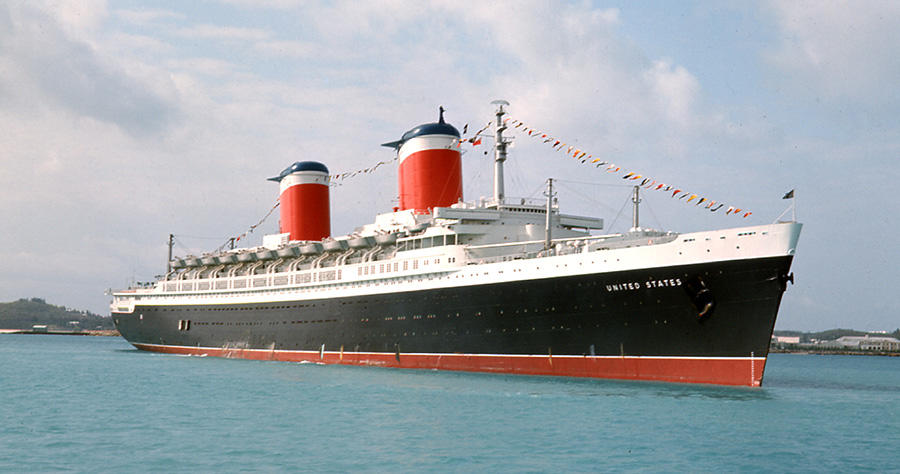Saving "America’s flagship"
The SS United States was designed by William Francis Gibbs, whose firm designed more than 60% of the nation's heavy armored ships during World War II. Photo: SS United States Conservancy
Known as “America’s flagship,” the SS United States was a marvel of post-war technology and elegance in the 1950s and ‘60s. Today, the storied ocean liner is docked in Philadelphia’s Delaware River awaiting its rebirth. Now there’s an effort underway to make it a reality.
Why you should know: More than one hundred feet longer than the Titanic, the SS United States shattered the transatlantic speed record in 1952. Originally designed by Leidos subsidiary Gibbs & Cox, the ship is a celebrated piece of maritime history and national symbol many believe should be preserved for future generations.
Specifics:
- With 247,785 horsepower, it could travel at 38 knots and outrun most battleships.
- Its design was part of a top-secret Pentagon program and could transport an entire Army division 10,000 miles without refueling.
- Offering regular service between New York and Europe, its famous passengers include John Wayne, Marilyn Monroe, Walt Disney and Elizabeth Taylor. It also carried four U.S. presidents (Harry Truman, Dwight Eisenhower, John Kennedy and a young Bill Clinton) and the Mona Lisa.
- Elaine Kaplan designed the ship’s revolutionary and top-secret propulsion system. Defying gender stereotypes of the 1950s, Kaplan and her team developed the four-blade and five-blade propeller configuration that became a Cold War military asset.
From the Source: "I find great strength and positive emotional feeling when I walk her decks," said Susan Gibbs, president of the SS United States Conservancy and granddaughter of William Francis Gibbs. "It's a deeply heartfelt and intense reminder of what this nation was and is capable of doing together.”
Over the last ten years, the nonprofit has built a global community of supporters to help protect the ship.
Looking ahead: Partnering with a New York-based developer, the conservancy is exploring potential uses for the redeveloped ship as a stationary, mixed-use venue. Designs include a shipboard museum celebrating the vessel’s history, American innovation, midcentury design and modern technology. Leidos contributed $25,000 toward the cost of keeping the ship afloat while plans develop.
Please contact the Leidos media relations team for more.

